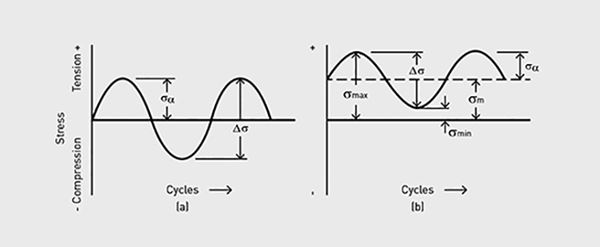7 criteria to prevent material fatigue
Material fatigue is defined as an accumulating degradation of material caused by dynamic stress with amplitude below the tensile strength limit. From the practical perspective we can divide the fatigue into two groups:
low-cycle fatigue with number of cycles up to 104 and amplitude of stress above the yield point, where plastic deformation predominates
high-cycle fatigue with number of cycles more than 104 and amplitude of stress, usually way below the yield point, where elastic deformation predominates
Low-cycle fatigue is not important for a design of the joint. During the low-cycle fatigue process, stress amplitudes usually exceed the yield point. Fasteners shouldn´t even reach this value of stress. On the other hand, we should be aware of the high-cycle fatigue! Designers of a fastened joint should always consider the influence of high-cycle fatigue when dynamic forces are expected!
On the figure typical example of dynamic loading cycle can be seen. The most important variable is not the maximal value of stress (σmax), but the amplitude of applied stress σa. It´s the essential parameter determining the fatigue behaviour of the material.

There is a very specific danger in fastener branch. When the lower amplitude of the loading cycle crosses the zero line, all preload in the fastened joint is lost and the screw will rotate loose or even break after some time. This situation should be prevented by the designer of a joint.
Download now your full white paper for free and discover more about the nature of material fatigue and gain the knowledge about prevention of material fatigue.
.jpg)

%20(1).jpg)

Comments
Post a Comment